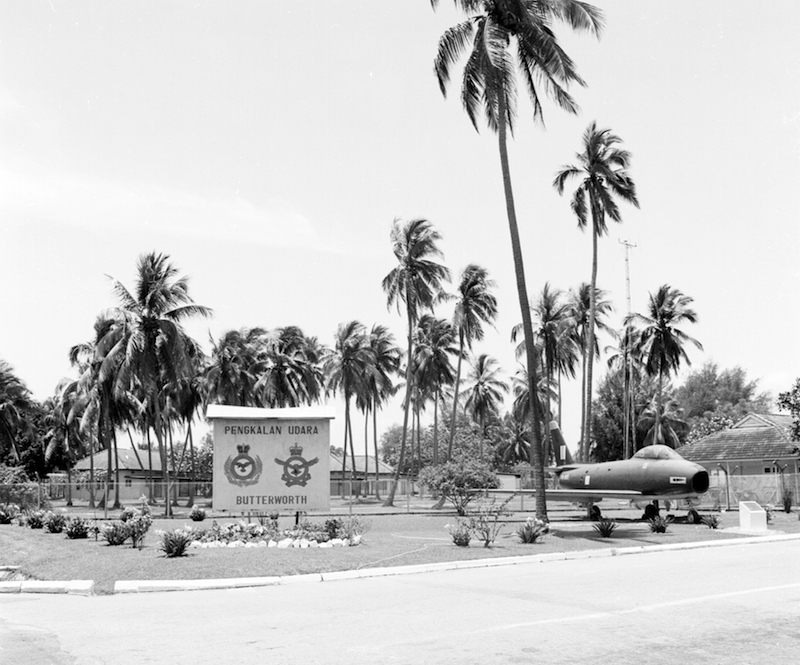SEBERANG PERAI, May 23 — “This is Radio R double A FB!” Now, that brings back memories… to Penangites who grew up in the 1970s.
In particular, they would look forward to Saturday nights when their song dedications were played throughout the night on Radio RAAF Butterworth.
The Australians took over the air base from the British in 1958 but the 1970s were really its golden years as its personnel and dependants grew to almost 5,000 people, all living around the state in Butterworth and also on the island.
Today, the RAAF base is the Royal Malaysia Air Force (RMAF) Butterworth base and the RAAF’s presence has dwindled to only about 150 personnel here.
According to RAAF Commanding Officer Paul Webb, many people, including younger Penangites, do not know about the history of the RAAF base.
“I believe those who are born after 1975 or after 1980 will not remember the significance of the RAAF base in Butterworth,” Webb said at a Penang Story talk on the brief history of the RAAF in Penang recently.

Soon the memory of the RAAF and its popular radio show will be but a distant memory of the older generation.
“There are no monuments, plaques or any signs that we were here and perhaps, in 20 years’ time… will people still remember that we were even here?” he asked.
The RAAF Butterworth was RAAF’s first permanent major air base outside of Australia at that time when it took control of the base on June 30, 1958.
The base provided aircraft and maintenance personnel in support of deployments and also provided medical and transport support facilities during the Vietnam War in the 1960s.
RAAF Air Vice Marshal William Henman said the base was also on alert to respond to any intrusions into Malaysian airspace and they carried out combat patrols near the border with Kalimantan, during a period of confrontation between Indonesia and Malaysia (1963-1966).
“The RAAF base definitely had a very strong impact on Butterworth in the 1950s, it was probably the mover and shaker of the economy of Penang,” he said.
The base, located at Bagan Ajam in Butterworth, served to boost the local economy, giving rise to traders and shops that enjoyed the patronage of the RAAF personnel, said a historian and local resident Khor Sim Ee.
Khor, who lived in Bagan Ajam during that period, remembered clearly how vibrant the area was and how the RAAF personnel would come out to shop and spend on their payday every fortnight.
“My family used to have a shop here and we served many of the RAAF people at that time so I could say they left a huge impact on the community here and contributed immensely to the economy,” she said.
The RAAF base also had a hospital that helped many local residents while providing job opportunities to others.
The presence of the RAAF here in Penang was not only felt in Butterworth but also on the island, particularly in Tanjung Bungah, Tanjung Tokong and Batu Ferringhi where most of the RAAF airmen and their families lived.
Where the Radio RAAF Butterworth exposed Penangites to international music and culture, the Australian community living amongst Penangites also exposed them to a different culture.

Henman believed that there should be a lobby to document the impact of the RAAF on Butterworth and Penang at that time.
“It would be a good idea to have some sort of a museum on the RAAF base here and we would gladly co-operate with anyone who wants to undertake such a project with us,” he said.
Currently, there are no other signs that Penang used to have thousands of RAAF airmen and their families living here except for their old favourite haunt, Hong Kong Bar, along Chulia Street in George Town.
“Hong Kong Bar was a very popular spot so it was almost like a rite of passage for anyone newly posted here to visit the bar,” Webb said.
The bar still exists today and it is the only bar with framed pictures of RAAF airmen, personnel and their families along with various RAAF plaques and mementos.
The talk, jointly organised by Think City Sdn Bhd and Penang Heritage Trust, is part of the Penang Story lectures that will now focus on the history of the mainland side of Penang.




















